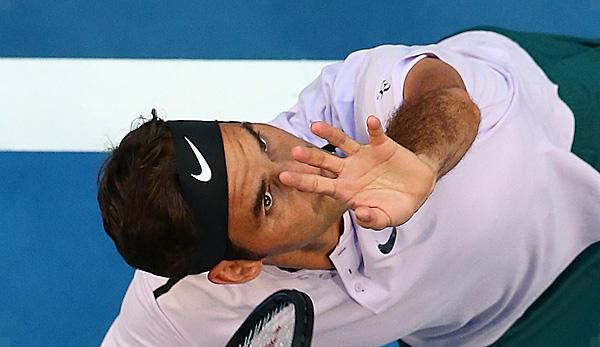Tennis
Service: Creative error analysis on impact
Concentrated, you stand at the baseline. You tap the ball three times and give your opponent a focused, grim, determined look. Quietly you start your service movement. Your ball throw is happy about your full attention…and what happens then?
The ball throw should not be too flat, but also not too high. You know you have a preference for dropping the ball too low. It’s not uncommon for you to hit the meeting point just above your head.
After you have thrown the ball straight, a little diagonally forward, everything in your head is suspended, except your attention on your ball throw and the highest possible hit point.
Five seconds later you watch the ball roll back to you from the net. Your first serve was apparently too flat, you now have to prepare for your second serve without knowing exactly what you can do better.
You have a handful of advantages if you can reflect on yourself as a tennis player. You can do this by asking yourself a lot of questions in the current match. If you are able to ask yourself and your tennis very uncomfortable questions, you even have two hands full of advantages.
Today we’re helping you with your serve. If this is wounded, it is always practical to have a fast-acting ointment with you. Where can you start when your first serve seems to be still in deep sleep? We’ll see how you can wake him up now.
Almost two weeks ago I watched a game between two young players. They were in their early 20s and were dueling at a really good level. However, one of them was constantly struggling with his first serve. Four times he told everyone understandably that his quota on the first serve was “laughable”.
After a short consideration I came to the conclusion that his quota was not so “laughable”, but that it was only interpreted as such by the player. Often you have unrealistic expectations of your first serve. If this does not happen twice in a row, the feeling of failure immediately takes hold.
However, this is not correct if four of the first seven serves are served. You always tend to notice more the mistakes than the good serves. Your expectations of your first serve are like a voracious monster that always wants to be fed. Let this monster starve to death!!!
Between you and me: It is completely crazy to expect a premium rate of 80% from yourself, when even Roger Federer has a complete idle for the first service – isn’t it? Always cool, always realistic. The higher you set the standard, the more brute the impact is in reality.
Before you get annoyed that you hardly serve any first serves or don’t have any timing at all, ask your ball throw the following questions:
You can bring a harmonious and smooth service movement to the court, which leads your club perfectly into the back. If your ball throw becomes a spoilsport, you can hardly correct this movement. Your first analysis should therefore always examine your ball throw.
It can help if you concentrate on letting the ball slip out of your hand as late as possible. If you let go of the ball very early, the ball throw often turns out uncontrolled. If you move the felt ball upwards longer, it has less time to leave the ideal trajectory.
A useful, small and practical tool to correct your serve is your wrist. It is similar to a screwdriver, with which you can quickly retighten the screw. After you start your service movement and take the club in the back, the next important step is the meeting point of the ball.
If your wrist is not working and stiffening very flexibly, the error rate at impact can increase. An indicator of this is when your serve flies noticeably often behind the T-line. If you notice this, check directly whether you use your wrist at the point where the ball hits or not.
With a small but very effective drop motion you gain more control over the ball and can influence the ball better. The impact is a terribly complex construct, which consists of countless small sequences. You can’t analyze the whole construct. But small screws – like your wrist.
The hectic pace and lack of stability throughout your body make you collapse on impact like a house of cards from which two important cards are removed. Arch tension and stability, on the other hand, ensure a calm balance. If you notice that you often become too chaotic on impact, start to keep your throwing arm up longer.
The arm with which you throw the ball provides more peace and stability in your entire movement. The opposite is the case if you drop the arm quickly or if it is very far from the head. Then the arm is like a small branch in the spokes of a bicycle – it blocks your flow.
I recommend that you just try how it feels to you in training when you hold your left arm (we assume you’re right-handed) closer to your head and longer up. You can also practice this in front of the mirror. You will notice that your position in the arc voltage is more stable.
A summary should briefly summarize the most important points of the article. Since I assume you’ve read the article up to here, I don’t want to repeat myself. Instead, I want you to know that you always have to find out what mistakes you make.
Does your serve land in the net, sideways or too far back out? Once you have determined this, you can begin to develop solutions. A succinct “Oh dear, my serve just won’t come today” won’t help you and won’t contribute to any solution.
Take three deep breaths, analyze what the error is and correct it immediately. I hope you can work with the tools in this article.













You must be logged in to post a comment Login